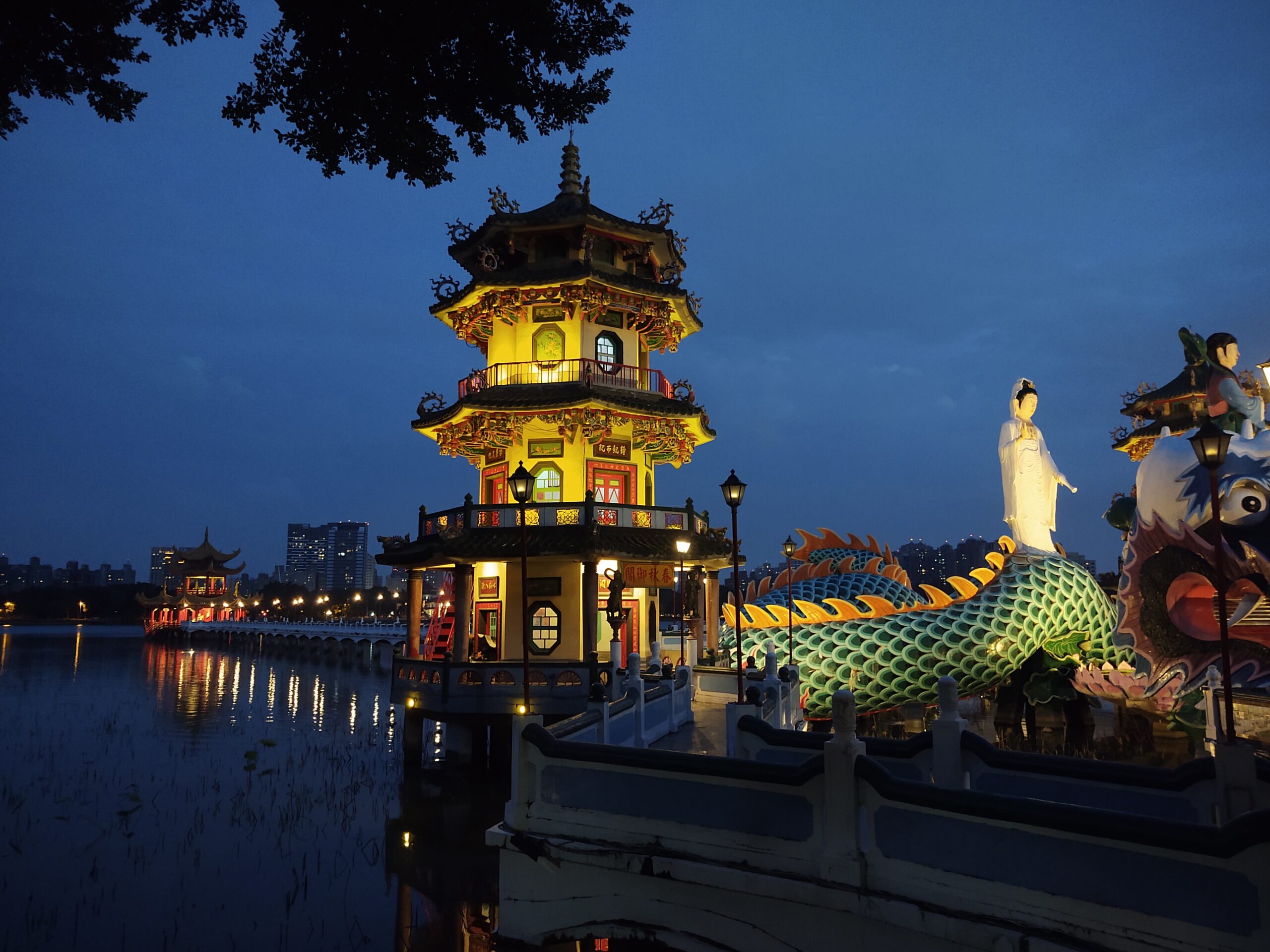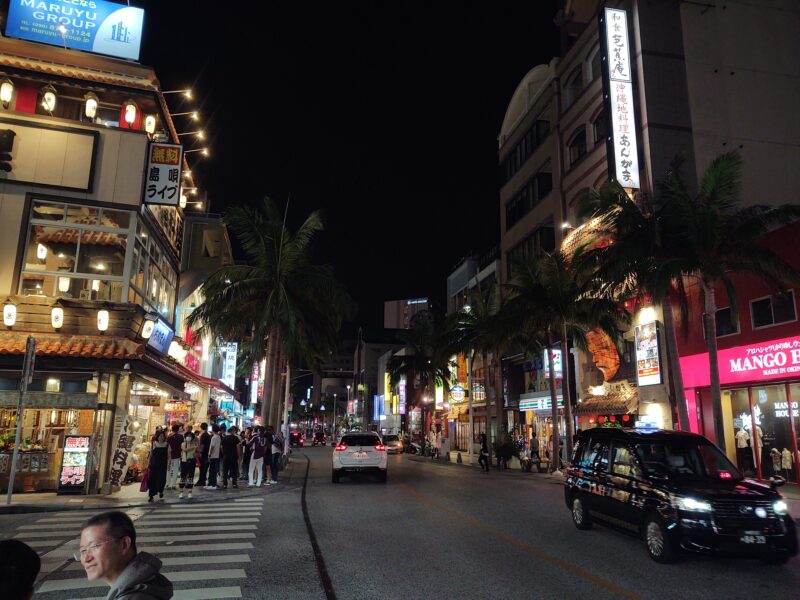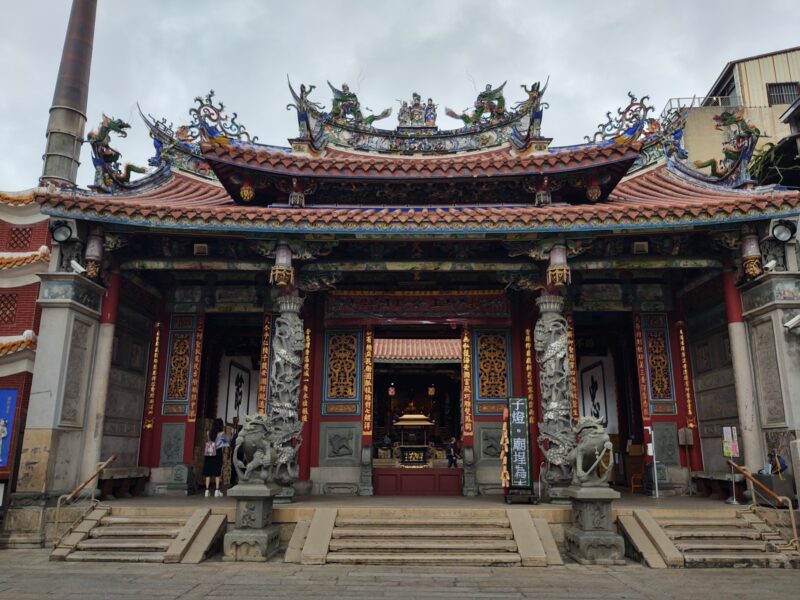See also:
- Taiwan Part One: Taipei Rush
- Taiwan Part Two: Natural Wonders
- Taiwan Part Three: A Step Back in Time
Special thanks to Nick Kembel, whose guidance was indispensable in putting this trip together. His site, Taiwan Obsessed, is the ultimate reference for planning a Taiwan trip.
Day 7: Kaohsiung & Fo Guang Shan
View all Kaohsiung & Fo Guang Shan photos
Kaohsiung is Taiwan’s second largest city and is perhaps the most colorful. It’s a major hub with a giant harbor and a strong identity rivaling Taipei, with countless sites to explore around the region for a fascinating blast of culture mixed with exciting urban bustle.
Dome of Light
We started the day by riding the KMRT metro one stop south to Formosa Boulevard Station to admire the dreamy Dome of Light installation. A rainbow of celestial symbols shone across the glass canvas above our heads. It was definitely the coolest subway station this New Yorker has ever been to.
We hopped back on the KMRT north towards Zuoying district. After a short walk, we sat down to a Taiwanese breakfast with the scallion egg pancakes that I was hopelessly falling in love with, paired with some refreshing and smooth soy milk. A friendly patron at the next table told us we’d picked a great shop; she is a regular customer who stops by a few times a week.
Fo Guang Shan
After breakfast, we took a 1-hour direct bus to Fo Guang Shan, located in the hills just outside the city.
Fo Guang Shan is a Taiwanese order of Mahayana Buddhism. It’s also the name of their monastery, the largest Buddhist monastery in Taiwan.
The Fo Guang Shan site is divided in two parts: The monks live and practice at the older monastery. On the other side of the hill, the Buddha Museum is geared towards teaching visitors about Buddhism.
Fo Guang Shan Buddha Museum
A stunning gatehouse marked the grounds entrance. Inside, we were immediately met with a somewhat unusual sight for a temple: Starbucks, jewelry stores, and fancy [vegetarian] restaurants.
The Great Path to Buddhahood
We emerged from the gatehouse into an otherworldly view.
A long walkway, called the Great Path to Buddhahood, led straight to the largest Buddha statue in Taiwan. The path is lined with eight pagodas, four on each side, to represent the Eightfold Noble Path. The giant Buddha is located behind a huge pyramid, with four more Indian-style stupas on each corner.
We stopped at one of the pagodas on the way towards the pyramid, where a volunteer smiled and welcomed us. She invited us in to come watch a video in English about the complex, which explained the unique function of each pagoda and provided information about the site’s incredible relics.
We walked through the huge compound before entering the pyramid, where we were welcomed by more friendly volunteers.
Buddhist Treasures
Just inside the atrium, there was a detailed wooden carving that showed the Buddha giving a sermon to 500 arhats (fully liberated beings) at Vulture Peak.
The pyramid also housed three precious statues:
In the first chamber, a colorful Avalokitesvara Bodhisattva stood tall with a thousand eyes and arms.
Another hall held a stunning golden sitting Buddha that had been gifted by the Thai royal family.
A staircase in the back led to the pyramid’s most sacred hall, featuring a reclining Buddha made from Burmese white jade. Around him, the large, silent room was covered in huge, detailed wooden panels that brought Buddhist stories to life.
Behind the perfect Buddha, the hall’s centerpiece is one of the world’s three remaining Buddha Tooth Relics. In fact, the entire complex was built just to host this divine relic.
Buddhist Stories
Another area of the museum had interactive exhibits that taught the Buddha’s archetypal story: discovering and cultivating timeless wisdom as a way to seek liberation from suffering. It’s a story I always enjoy hearing – and the museum’s delivery was clear, engaging, and well done. Upstairs, galleries displayed beautiful painting collections from Taiwanese artists.
It was raining when we reached the pyramid’s top floor, so we admired the giant Buddha statue and four stupas from afar, each housing more artifacts. Afterwards, we returned to the gatehouse restaurants for some tasty vegetarian food and herbal tea.
Liouhe Night Market
At nightfall, we took a bus back to the city center. The bustle of the city brought us back to earth after the sublime Fo Guang Shan site. I was dazzled by the lights as we walked over to the nearby Liouhe Night Market.
We had some tasty melt-in-the-mouth grilled scallop skewers, always-delicious xiaolongbao, and tried a great oyster omelet, a savory Taiwanese classic.
Dream Mall & Kaohsiung Eye
Afterwards, we headed to the Dream Mall shopping complex where we browsed around for some dessert, eventually enjoying a matcha ice cream sundae and bubble tea.
Floor after floor, we shopped our way upstairs through the elegant mall. On the roof, a small amusement park featured kid’s rides and a lit-up ferris wheel called the Kaohsiung Eye.
It was surprisingly empty and we were the only ones riding the Eye when we got on. Circling above the mall, we got some fantastic views of the city’s skyline. The greater urban area’s lights spread out far and wide around us.
Day 8: Kaohsiung, Past & Present
In the morning, we took the KMRT to Kaohsiung Harbor, the largest in Taiwan. After a quick cafe breakfast, we joined a free walking tour of the historic harbor hosted by Like it Formosa. Our guides took us on a journey back to Kaohsiung’s early days as a trading port and encouraged us to imagine sailors’ lives back then.
Kaohsiung Harbor History Walk
The tour started at the former site of a hotel that once housed sailors before their voyages. It was later destroyed and converted into a school. A mosaic and some stonework are all that remain of the hotel.
Afterwards, we visited the nearby Daitian Temple, where seamen would pray to the ocean gods for a successful voyage. The temple is unique for its sea imagery, including carvings of lobsters and fish in the stonework.
We crossed a bridge next to Gushan Ferry Station, where the mountains meet the sea. On the other side, we were welcomed with a wide view of the harbor where huge ships slowly floated by. Our guides began pointing out different buildings in the carefully crafted harbor skyline.
The 85 Sky Tower – Kaohsiung’s tallest building – is shaped like the first character in the city’s Chinese name. Below it, the Kaohsiung Cruise Terminal looks like a whale on the edge of the water.
The 85 Sky Tower is shaped like the first character in the city’s name. (Image Credit)
The prismatic China Steel Headquarters stands as a mysterious box, while the closest and newest building – the Kaohsiung Music Center – rises with its bizarre spaceship-meets-honeycomb style, completed just two years earlier in 2021.
British Consulate at Takow
Nearby, there was a quaint columned building that had formerly housed the British Consulate at Takow. It was built in 1879 to help manage international trade at the giant port; now, it’s a museum.
We went back across the bridge and wandered the historic area’s colorful streets, filled with a mix of British, Japanese, and Taiwanese style buildings from different eras.
The tour ended at Kaohsiung Port Warehouse No. 2, an old shipping warehouse now converted into a trendy food and shopping center. The charming piers were full of old warehouses now covered in elaborate murals.
Kaohsiung Business District
After our tour, I surprised Cream with lunch at a Japanese seafood store I’d found in my research, called Hei Bonn Gōrudohausu. We scarfed down trays of incredible seafood, helping ourselves to tuna and salmon sashimi alongside tender grilled squid. It was possibly the best sashimi we’ve ever had, and reasonably priced.
Fully satisfied, we wandered southeast through the business district. Wide boulevards seemed quiet in the tropical afternoon heat, with trees gently swaying to divide the roadways. Taiwanese flags were proudly on display left and right. The city seemed calm while we walked by tall office buildings and interesting architecture.
Weiwuying Street Art
We rode the KMRT to Weiwuying, a district famous for its street art. Emerging from the metro station, we soon bumped into a huge, colorful bookcase mural spanning all three floors of a wide building. Huge cats, shoes, and accessories sat between books on the homey shelves.
We wandered deeper into Weiwuying’s streets and alleys, where it seemed like every building had its own murals and playful style. Families sat in the quiet courtyards and playgrounds between apartment buildings that depicted aquariums, animals, and abstract scenes.
My favorite side alley had murals of sneaky dogs trying to break into ice cream stores on each building. It was simultaneously hilarious and very charming. It seemed like it must be a really fun place to grow up.
Lotus Pond
We arrived at Lotus Pond in the late afternoon. The man-made pond is lined with large, important temples and is perhaps Kaohsiung’s most famous cultural attraction.
A large market was set up around the perimeter – possibly to celebrate the upcoming Taiwan National Day – and it was surprisingly crowded. People all around the country were returning to their family homes for the major holiday, praying at the temples and welcoming the new season with positivity.
Dragon and Tiger Pagodas
We visited each temple, starting with the famous Dragon and Tiger Pagodas.
When we visited, the seven-storey twin pagodas were under renovation and covered in scaffolding, but visitors could still perform the temple’s unique ritual: Entering through the tiger’s mouth and bursting out from the dragon’s turns misfortune into good luck.
Spring and Autumn Pavilions
Next, we came to an impressive statue of Lady Guanyin riding a sea dragon, with the small and colorful Spring and Autumn Pavilions on either side.
Directly behind Guanyin, a walkway led straight over the lake to a small gazebo. It was a calm respite from the busy scene along the lakeside. We rested as the sun set, enjoying a picturesque 360° view in the middle of the pond. The statues began reflecting in the water as nighttime fell.
Zuoying Yuandi Temple
Next along the pond we reached Zuoying Yuandi Temple, where another walkway led to a giant statue of the Taoist god, Xuan Wu. The deified emperor of Han China was lit up proudly in the warm evening air, his eyes holding a simultaneously fierce and wise gaze.
We stopped by the lakeside market for some delicious fried mushrooms. Cream also munched on some fish meatballs, one of her favorites.
We walked a little more and queued for a tasty-looking stand serving Thai papaya salad (som tam). While they were preparing it, Cream mentioned to the vendor that she’s from Thailand. Tainan? they replied, referencing the city 45 minutes away. No, Thai LAND! We had a good laugh together as the owner gave us a big smile and welcome.
Their som tam was good, with plenty of spice!
Ruifeng Night Market
We hopped in an Uber to Ruifeng Night Market, a recommendation we’d repeatedly heard from a dozen sources as Kaohsiung’s best market for sampling delicious and authentic local cuisine.
The market was super busy and full of locals. Cream was stuffed from the earlier pickings and did some shopping while I browsed around.
Pepper Pie
In the market, I began encountering some of the audacious dishes I’d read about while researching Taiwan. A quick pepper pie was simple but stellar, freshly cooked and bursting with flavorful juices.
Donut Sandwich (?!!)
Then I picked up a donut sandwich with potato salad inside. A what?! you ask.
My mind was blown; the donut-like bun was sugary yet the perfect texture to complement the smooth, creamy, and light potato salad inside. I still can’t comprehend how such a dish could taste so light, fluffy, sweet, and savory all at once. This page describes it better than I ever could.
Beef Noodle Soup
With a bit of time to spare, I figured it was finally time for me to try one of Taiwan’s most beloved dishes: beef noodle soup!
The bowl I had at Ruifeng was one of the most delicious things I’ve tasted, not only on the trip, but in my whole life. After stuffing down pieces of tender beef and perfectly cooked noodles, I sipped the salty, hearty broth. Like all the food we had in Taiwan, it was surprisingly well balanced despite its combination of potentially heavy ingredients and overflowing with flavor.
I finished the transcendent meal and linked up with Cream, who had finished shopping for some fresh skincare. We rounded out the visit with a light watermelon juice.
Love River Boat Tour
We took another Uber back toward the city, getting off at the Love River for a harbor boat tour to end the long day.
The boat lit up with all sorts of fun party lights while it slowly drifted out towards the Kaohsiung Music Center, with spotlights dancing around the bizarre honeycomb architecture. A guide gave an energetic tour in Chinese while we sat back and enjoyed more views of the city’s electric skyline along the curved harbor.
Day 9: Taipei, Revisited
In the morning, the KMRT brought us to Kaohsiung’s high speed rail station at Zuoying, where we boarded the nearly 200-mph Taiwan HSR for our second time. Two stops and just 1.5 hours later, we arrived back at Main Station in central Taipei, all the way across the country.
It felt good to be back in the familiar neighborhood. We’d come full circle after an exciting and fast-paced adventure. After the strenuous day before, we decided to take Taipei at a slower pace. We relaxed with a coffee, sitting back and soaking in the capital’s classy vibes.
Elephant Mountain
We took the MRT to Elephant Mountain (Xiangshan) for a hike up from the middle of the city. The tropical weather brewed hot and humid as we ascended up the mountain.
We were covered in sweat by the time we began reaching observation decks, with fantastic views of Taipei 101 – the tallest building in the country – towering above the city.
Xinyi District
We headed back down into nearby Xinyi District, an upscale area full of shopping centers surrounding Taipei 101.
Din Tai Fung
In one of the malls, we queued for one of Taiwan’s most popular restaurants, Din Tai Fung, which has raised the craft of soup dumplings to a legendary level. In the window, we watched the dumpling masters putting the tasty little balls of dough together and preparing them for steaming.
The food was worth the wait, where we had some of the world’s best xiaolongbao and shrimp and veggie dumplings that were bursting with flavor. We paired it with excellent stir fried morning glory and superb fried rice.
Sun Yat-Sen Memorial Hall
We meandered our way around Xinyi, snaking our way through the wide boulevards to Dr. Sun Yat-Sen Memorial Hall.
Another of Taipei’s most iconic buildings, this hall honors the revolutionary who rebelled against the Qing Dynasty and established the Republic of China in 1912.
A large statue of Dr. Sun Yat-Sen calmly sits inside. Children played in the large park out front, with more great views of Taipei 101 and the city skyline all around us.
Ximending
We relaxed at the hotel before exploring Ximending, Taipei’s trendiest downtown area, for an evening stroll. It began to rain while we were there, but the pedestrian-only streets were still packed with young locals and tourists under the glowing lights and displays.
We had pasta for dinner for a change of pace, then grabbed some fantastic mango bingsu and a Taiwan-classic tofu pudding for dessert. On the way home, we relaxed with a foot massage.
Day 10: Tamsui & Taipei North
View all Taipei Surroundings photos
We spent our last full day in Taiwan doing some final touring in Taipei and the surrounding area.
We set off in the morning with one final egg scallion pancake, this time with some tender beef wrapped inside the flaky pastry. I was entranced by the robust savory and salty flavors, sitting back and soaking it all in.
Dihua Old Street
Nearby, a stroll through Dihua Street – the oldest street in Taipei – brought historic Tainan back to mind, with its streetside passages and traditional vibe. But while Tainan was quiet during our visit, Dihua Street was packed with a bustling market.
Spice shops, traditional medicine, and tea vendors sold huge containers of ingredients on the narrow sidewalks while the masses passed through, single file. Thick aromas filled the hot air. It was an interesting place to check out, but a bit crowded and touristy.
The World’s First Cat Cafe
We got on the MRT and headed north to Zhishan. Directly across the street from the above-ground subway, Cafe Dogs & Cats 1998 blended in with the shops around it. The curtains were closed and it seemed dark – we weren’t even sure if it was open. We tried the door and went inside, where it was surprisingly busy.
The unassuming cafe holds a special distinction: it’s the world’s first cat cafe. More than a dozen animals wandered around, including two big dogs who ran over to greet us when we walked in. Cats lounged around on little beds and cushions everywhere.
We played with some new furry friends while enjoying a coffee, missing our own Pancake and Payoon. Drawings on the walls, tables, and even the latte art held cute images of animals. It was a very cute place and a lovely visit.
Tamsui
We boarded the metro again and made our way to Tamsui, where the wide Tamsui River opens out into a great bay as it nears the Pacific Ocean.
We strolled along the long riverwalk park. It was very crowded on this particular day – October 9th, the day before National Day. Huge crowds of people walked, sat, ate, chatted, played music, and danced, with kids running around and playing. One cheerful woman sang karaoke to “One Day” by Matisyahu – the perfect song to match the positive and peaceful setting – and lit up with a grin as I walked by, mouthing the words back to her.
That we don’t want to fight no more, there’ll be no more wars, and our children will play.
One day, one day, one day…”
Tamsui Old Street
We walked north along the riverwalk and eventually went inland one block to Tamsui Old Street, which was even more packed. Taiwanese flags flew over countless shops selling different snacks, teas, and souvenirs.
Cream and I picked up some sponge cake – after all these years, I finally learned the formal name is castella – that was fantastically soft and sweet. The portion was giant, but it was so light and fluffy that we managed to eat most of it and saved the rest for later. I also grabbed some pineapple cakes, Taiwan’s most popular food souvenir, as a Christmas gift to bring home.
Fisherman’s Wharf
Next, we boarded a 10-minute boat to the Fisherman’s Wharf. The protected harbor sits on Taiwan’s northern coast, with a cable-stayed bridge spanning the center providing beautiful views over the water. It’s lined with small shops selling snacks and fresh seafood.
It was cloudy and large waves crested on the ocean. A soft drizzle fell as we arrived. We walked around the small harbor, crossing the bridge and relishing the wide views over the surrounding area.
Mala Hot Pot, Ximending Style
After a short walk back through Tamsui to the MRT, we rode to the city center for our last dinner in Taiwan. And what better way could we end the trip than with a second round of our spicy, mouth-numbing favorite: mala hot pot.
Ximending has dozens of hot pot restaurants; one of Cream’s friends, who lived and studied in Taipei for a few years, highly recommended one called Xin Xin.
We indulged in one of the best meals on a trip that had been full of excellent food. We helped ourselves to the unlimited buffet that included five different types of wagyu beef, Australian and New Zealand steaks, USDA prime cuts, and all the regular offerings of shrimp and pork belly and such. A broad sauce bar held an array of veggies and garnishes to craft the perfect dipping sauce, plus the usual noodles, drinks, and ice cream.
We tried many of their different meats; then, after a while, I just started going to town on my favorite wagyu. When in Rome, right? The meat was sliced paper-thin and transformed from raw to cooked in a matter of seconds in the boiling soup. After a quick dip in the sauce, every bite of the tenderest beef ever blew my mind. Pure delight.
Goodbye, Taiwan
Cream and I are both foodies, so this memorable meal was the perfect way to end and celebrate our amazing 10 days in Taiwan.
It was one of the best trips I’ve ever been on. Every day was full of exciting activities; yet each felt completely different from the rest. We were in a constant state of discovery, flow, and enjoyment as we explored one of the world’s most fascinating and beautiful countries. When I look back at these stories and think of Taiwan, I feel immense gratitude and inspiration for the place that created so many incredible memories.
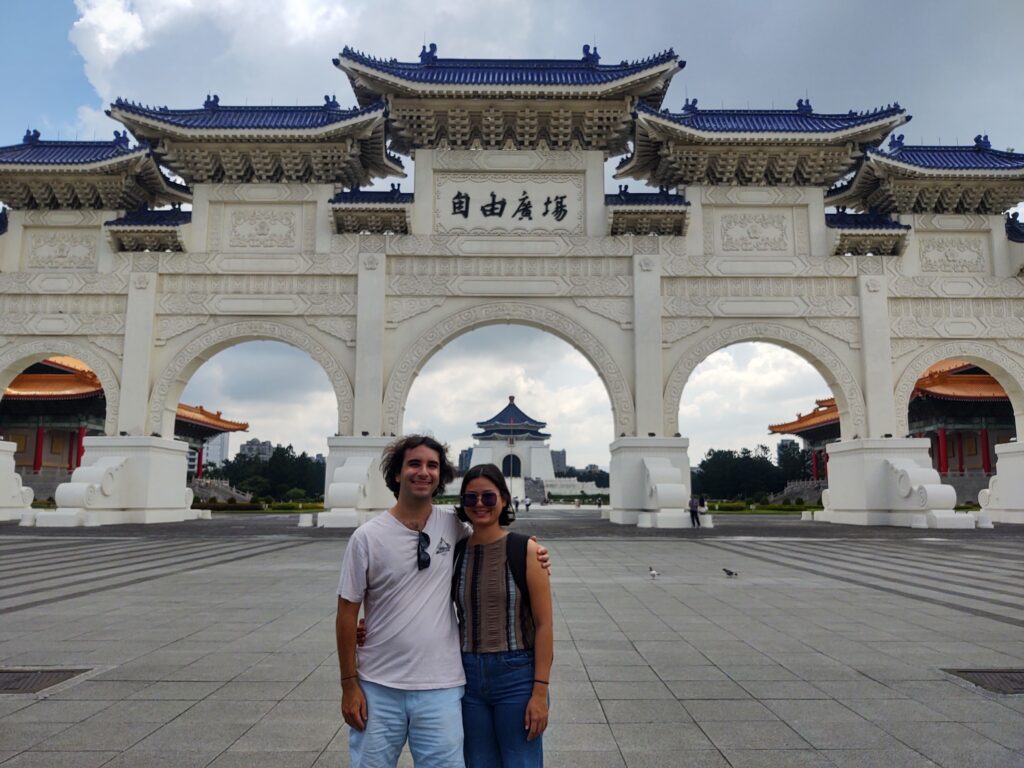
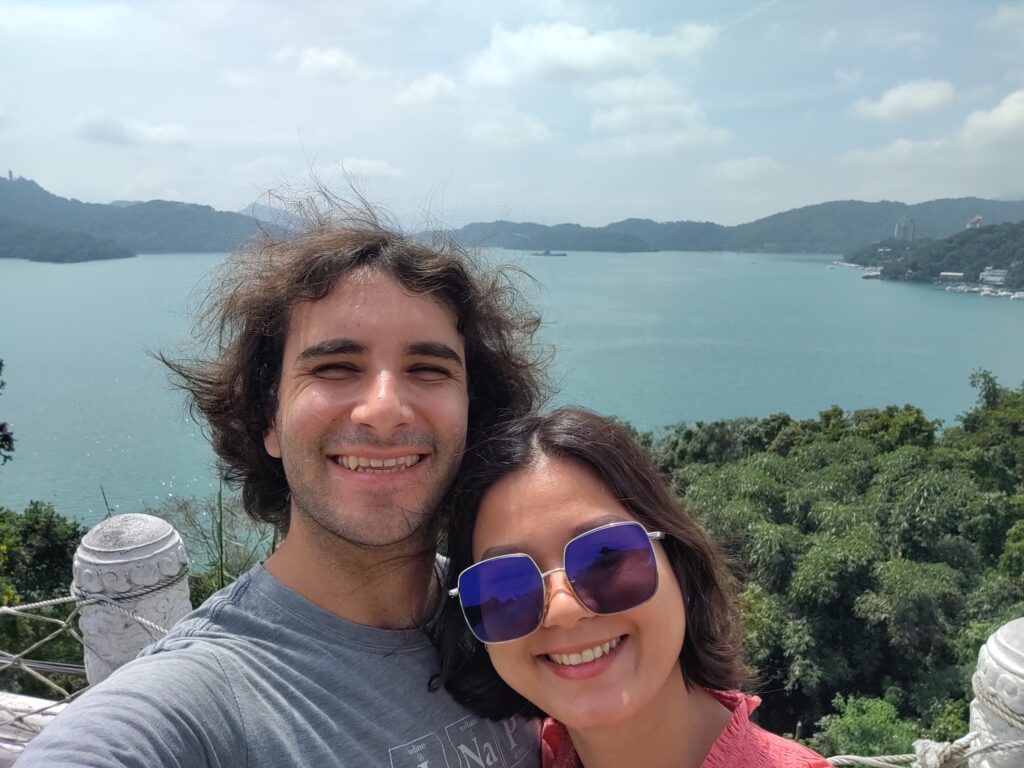
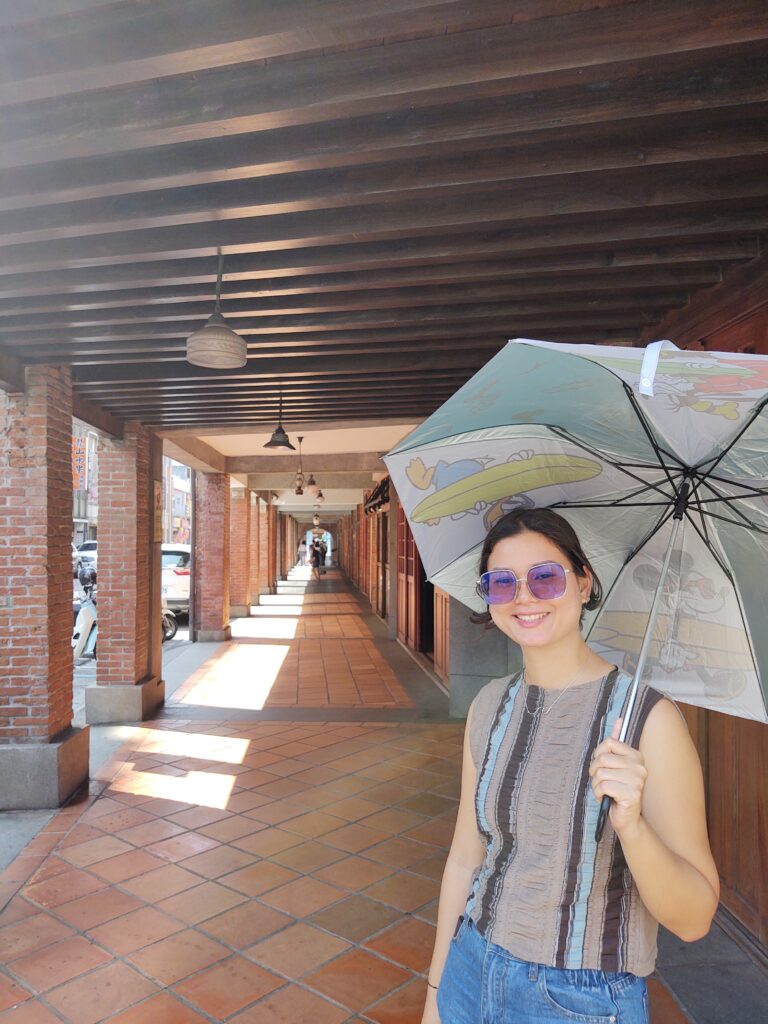
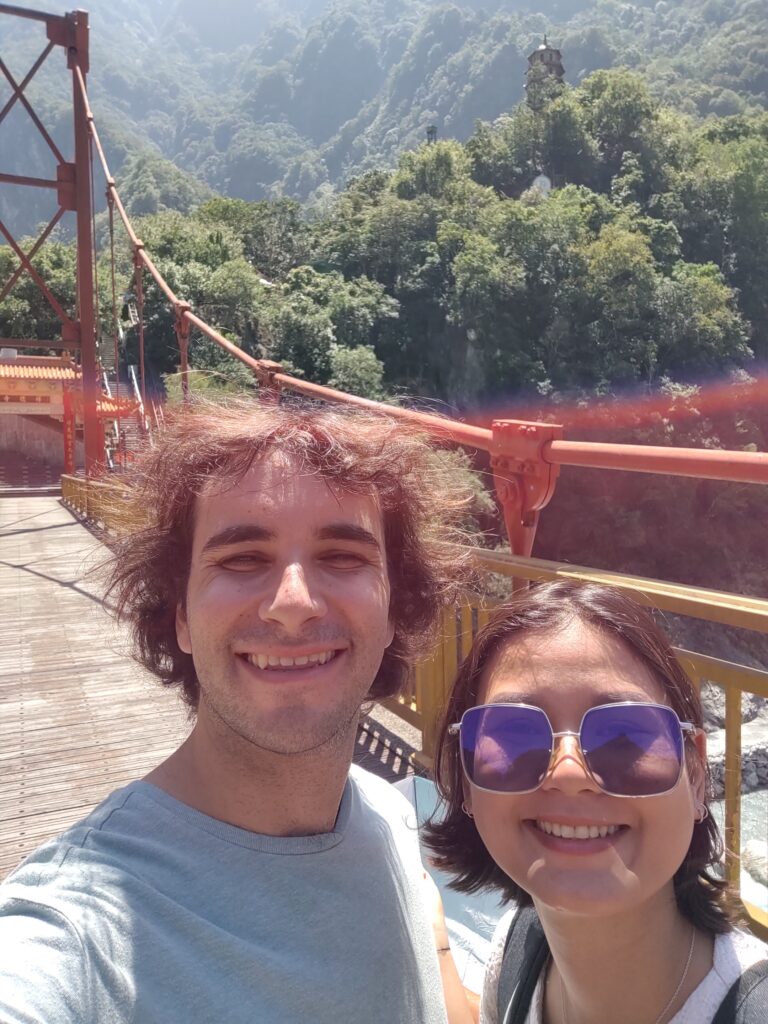
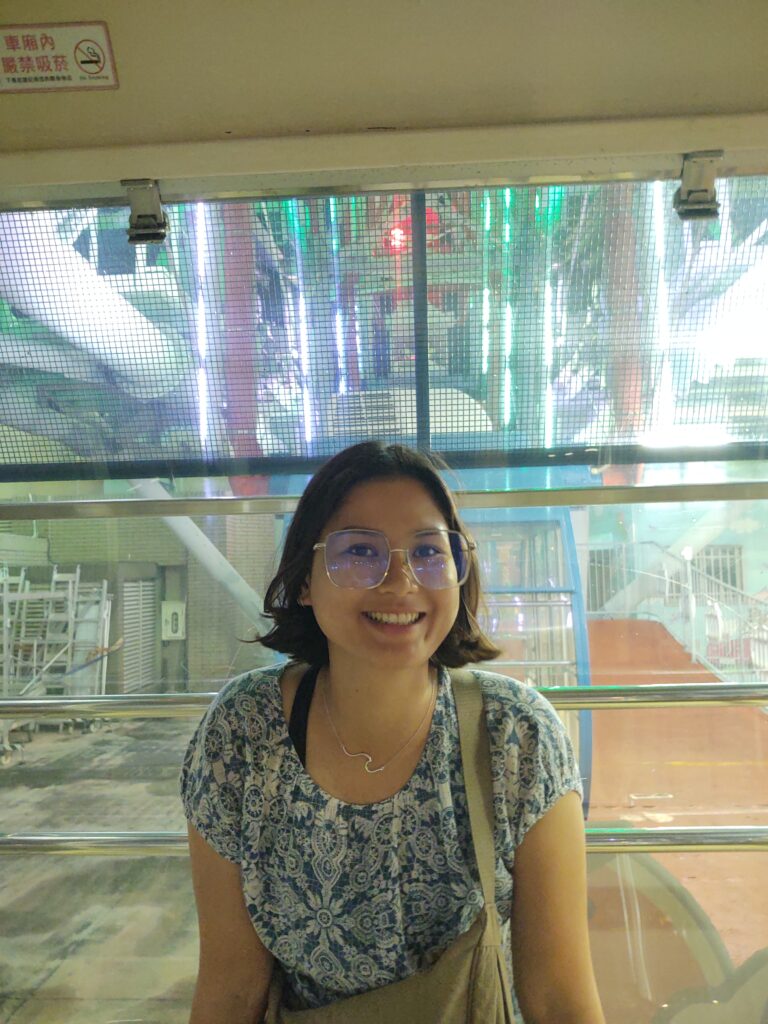
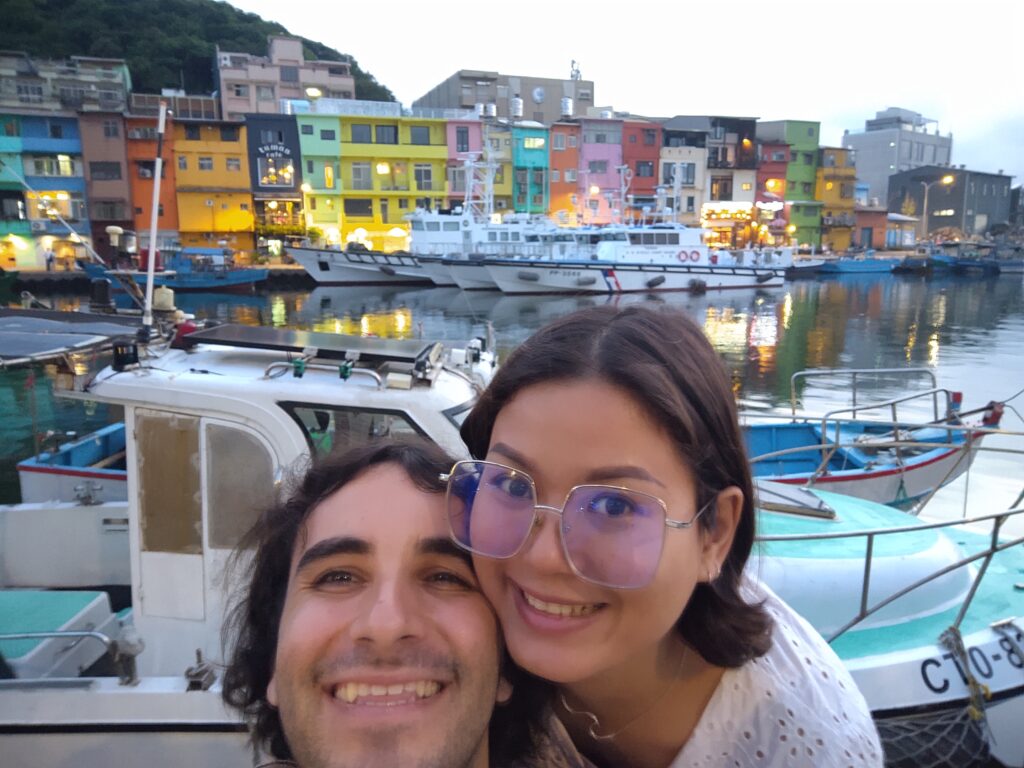
Thank you for joining this adventure,
Andrew
